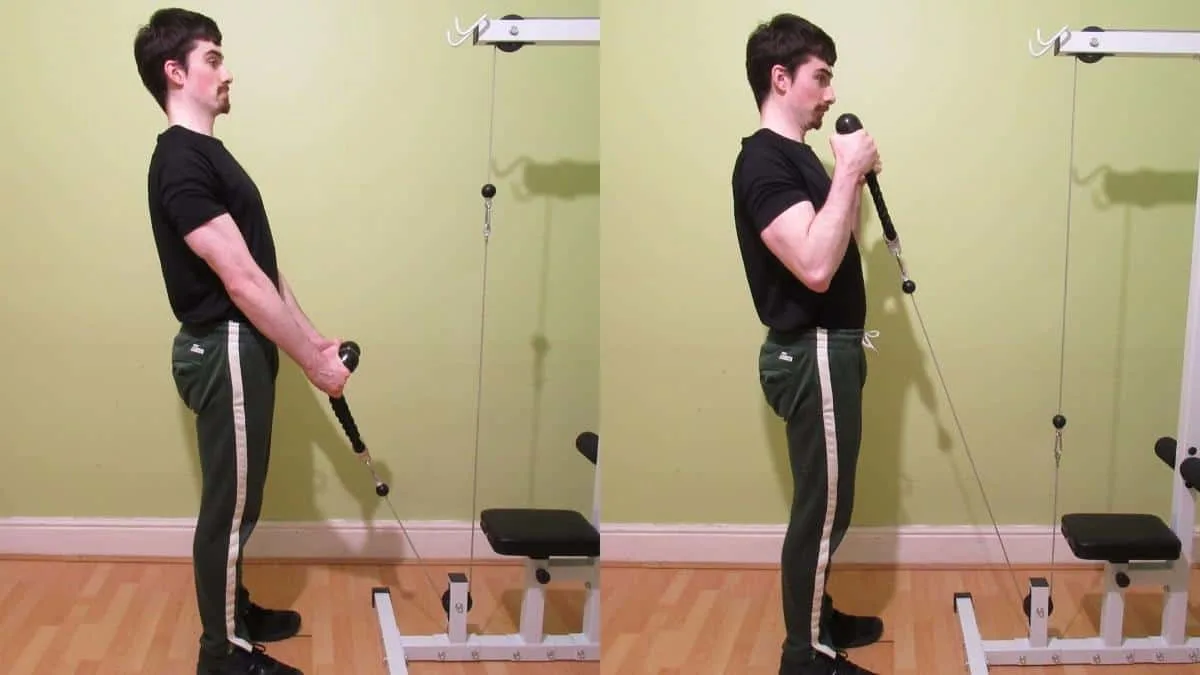The biceps get all the glory and attention because they’re one of the most visible muscles on the human body. But did you know that rope hammer curls work 3 different upper arm muscles?
Unlike regular cable curls, which focus only on the biceps, the rope cable curl optimally trains your brachialis and brachioradialis, as well as the biceps long head. This results in fuller-looking arms from every angle because by doing the rope hammer curl, you’re not letting any muscles lag behind.
Related: Biceps and chest workout
Cable hammer curls exercise details
- Other Names: Cable rope bicep curl
- Main Muscles: Brachialis, brachioradialis, biceps brachii
- Secondary Muscles: Forearm flexors, forearm extensors
- Exercise Type: Strength
- Exercise Mechanics: Isolation
- Difficulty Level: Beginner
- Equipment Needed: Cable machine, rope attachment
How to do rope hammer curls
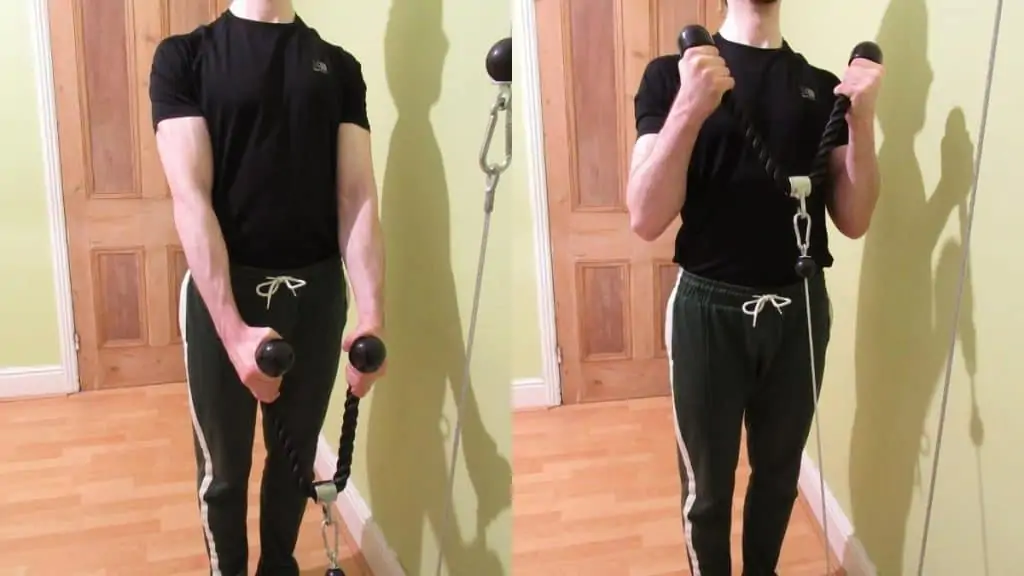
- Position a pulley at the bottom of a cable machine and connect a rope attachment.
- Hold the rope with a neutral grip so that your palms are facing each other.
- Lift the rope towards your shoulders by flexing your elbows (aim to keep your shoulders still).
- Lower the rope under control until your elbows are fully locked out.
- Repeat for 3-4 sets of 6-10 reps.
Cable rope hammer curl benefits
Cable rope hammer curls provide constant tension and thus a more potent muscle pump than the regular free-weight variation. But due to their mass-building nature, you could even make the rope curl your primary bicep exercise if you prefer the convenience of cables to the complexities of free weights.
Fantastic forearms
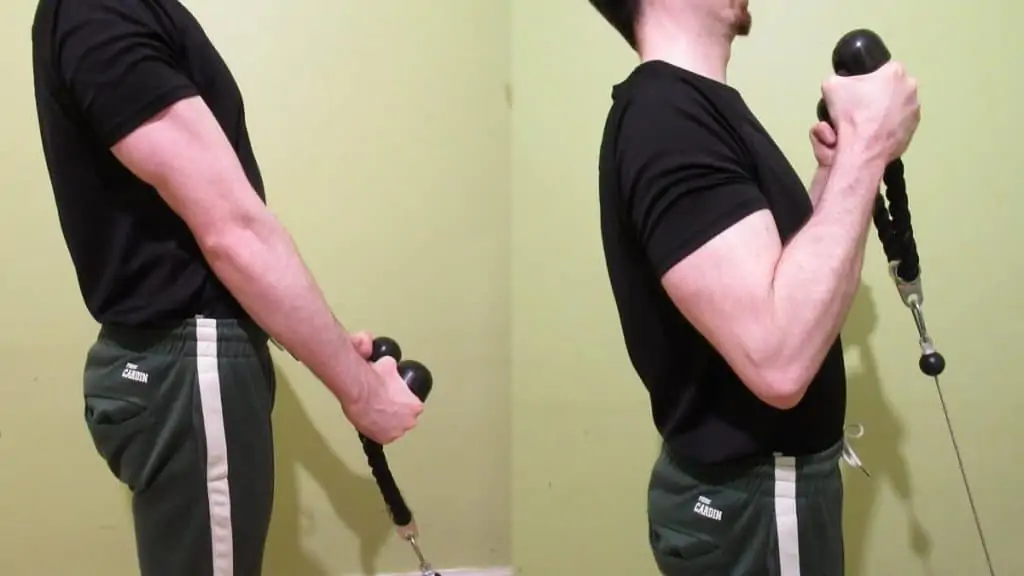
The cable hammer curl makes your arms looking more three-dimensional by working the brachioradialis. This is the large lower arm muscle that sits on the thumb-side of your forearm, which, when well-developed, makes your arms look fuller because it visually connects your lower arms to your upper arms when they’re hanging in a relaxed position (i.e., most of the time).
How do hammer rope curls emphasize your forearms?
Because by holding the rope in a neutral position, you’re naturally reducing the bicep activation because the biceps aren’t supinated, which is one of their two main functions (elbow flexion is the other).
As such, your forearms are called upon to a greater degree during the lifting motion. This is doubly beneficial if you lift heavy (6-8 reps) because the brachioradialis comprises of 60% type 2 (fast-twitch) muscle fibers. [1] So don’t just use rope cable curls as a finishing exercise. Do them when you’re fresh so that you can get those gains by lifting heavy!
Bigger brachialis
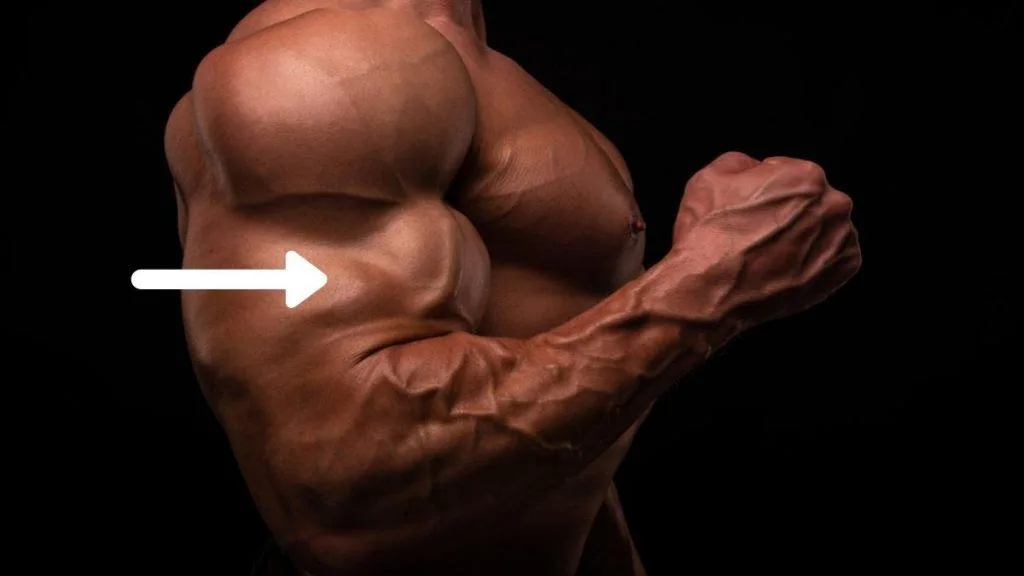
The often-overlooked brachialis lies beneath the biceps and is one of the most important muscles for developing that coveted biceps peak because it can really help to push your biceps out more and thus make them rounder.
Since it only attaches to the ulna bone, elbow flexion is the only function of the brachialis. [2] Therefore, to train it optimally, you need to perform movements where your hands are in a neutral or pronated position. Doing cable curls with a rope is the ideal exercise here because this grip allows you to lift more weight—and thus overload the brachialis to a higher degree—than reverse-grip bicep drills.
Related exercise: Overhead cable curl
Better biceps long head
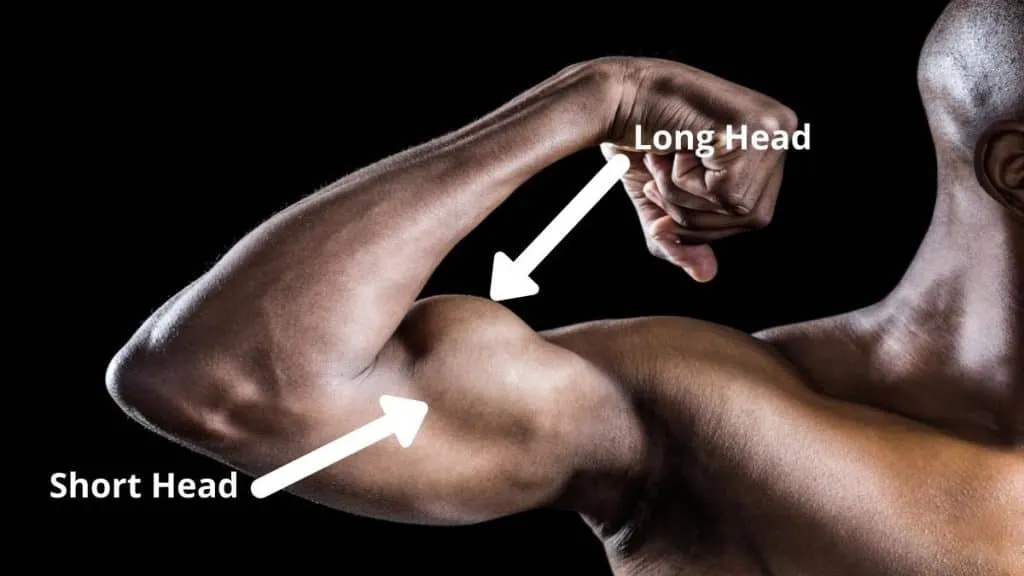
The outer part of the bicep is called the long head. Notably, it’s one of the most underdeveloped muscles on many lifter’s physiques. And while there are better exercises for the long head than hammer rope cable curls, getting in some extra training volume for your lagging long head is never a bad thing.
But to increase the activation even more, you can actually use a single hammer curl rope attachment and train one arm at a time. Just make sure to position your arm behind your torso while doing this exercise variation because having your arm behind you places a greater stretch on the long head of your biceps.
See our guide to the behind the back curl if you’d like more information on bicep muscle activation.
Simple setup
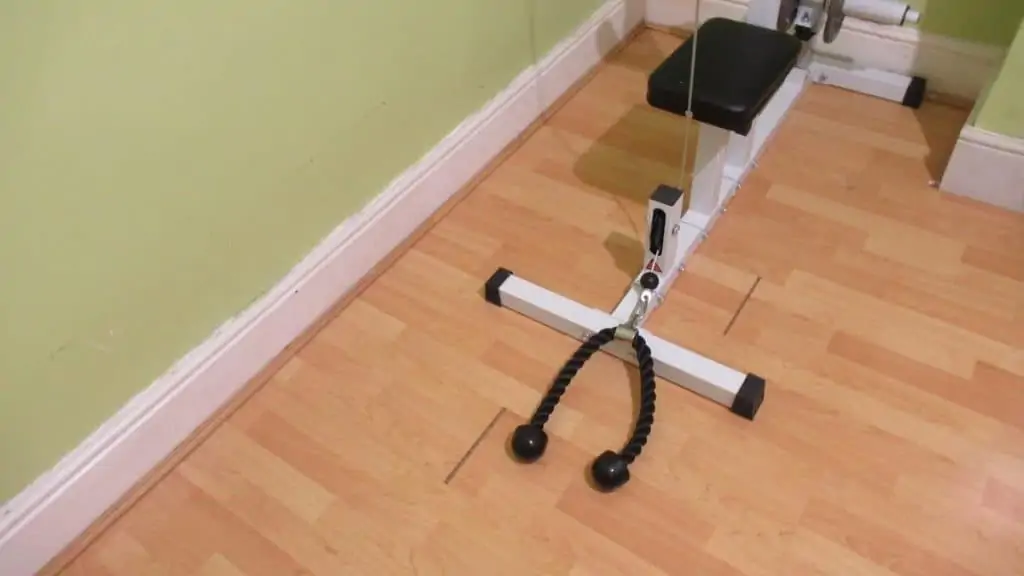
It seems like someone else is always using the dumbbells that you need. And while patience is just part and parcel of training in a busy commercial gym, having to settle for weights that are either too light or too heavy for you can result in an ineffective workout.
But as long as you have a cable machine and a rope attachment, you can always do the rope bicep curl—with whatever weight you desire. It’s much quicker to change the resistance of a weight stack than it is to grab another pair of dumbbells (which may not even be available). So if you like to get in and out of the gym quickly, then consider making cable rope hammer curls a staple exercise in your arm routine.
Easy progressive overload
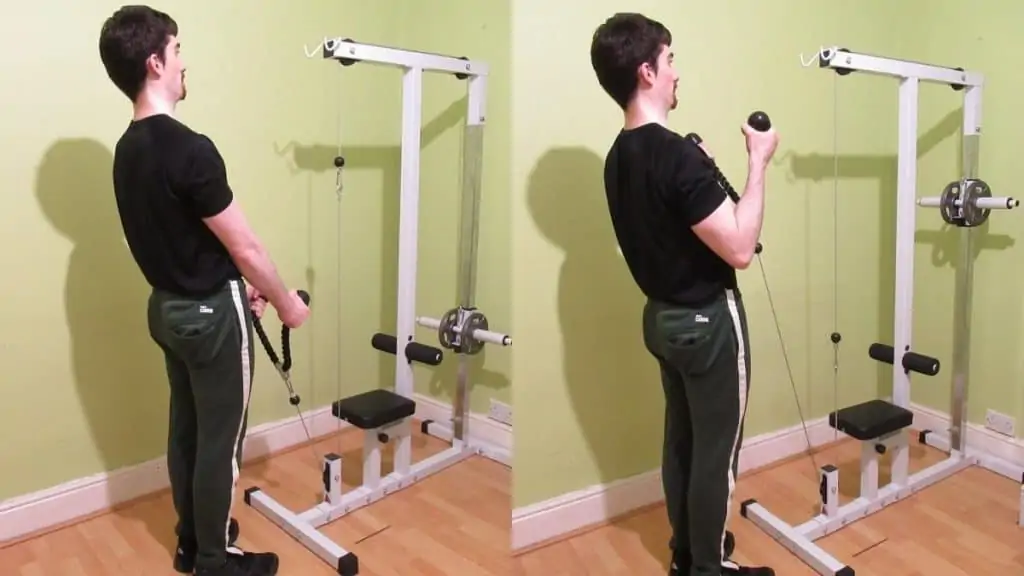
The weight stacks on cable machines typically increase in smaller increments than pairs of dumbbells do. As such, you can gain arm strength (and thereby size) faster by using cables as your primary training tool because they naturally lend themselves better to progressive overload, which is arguably the most critical factor in gaining muscle.
Don’t underestimate this benefit. The biceps are tiny compared to most of your other muscles. So even a 5-10lb increase will feel extremely challenging. But remember that you can always speed up your strength progress by using cable machines that have more manageable 2.5-5lb weight increments.
Cable rope hammer curl alternatives and variations
There’s more than one way to do hammer curls with a rope. So if you enjoy having variety in your lifting regime or just want to hit your arms from a slightly different angle, check out the most effective rope curl variations below.
You can also check out our full cable biceps workout if you’re looking for a complete routine to follow.
- Alternating dumbbell hammer curls
- Incline bench hammer curls
- Preacher hammer dumbbell curl
- Cross-body hammer curls
- Zottman cable curls
Single arm rope curls
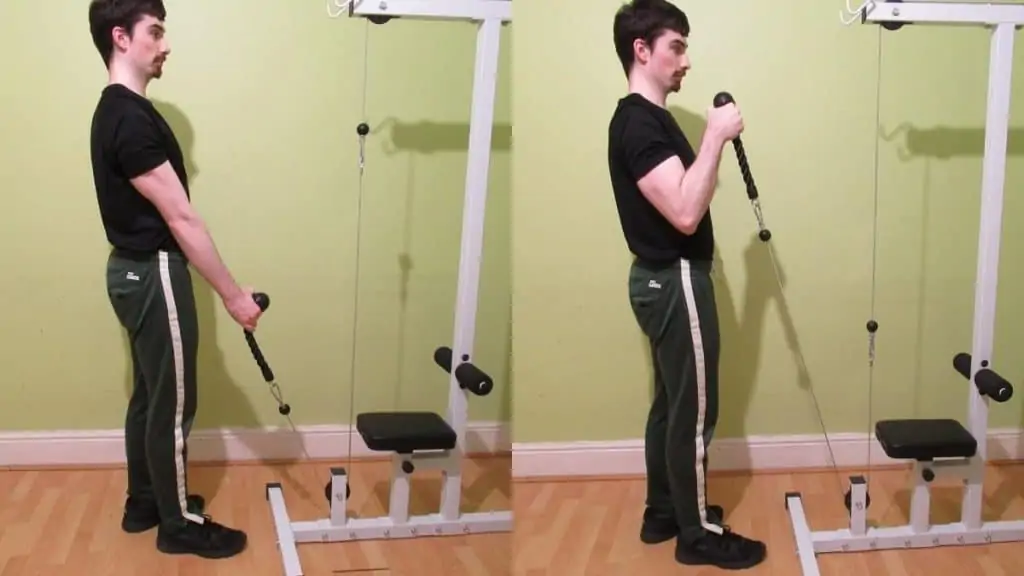
The single-arm rope cable hammer curl helps you to develop a better mind-muscle connection because you can dedicate 100% of your attention to working each individual arm.
The downside is that unless you have something to hold onto, you’ll likely feel off-balance while doing cable rope curls one arm at a time because they demand greater core stability than the two-arm variant.
But if you have muscle imbalances, then it’s definitely worth giving this unorthodox variation a shot so that you can build more even looking biceps.
Cross body cable rope curls
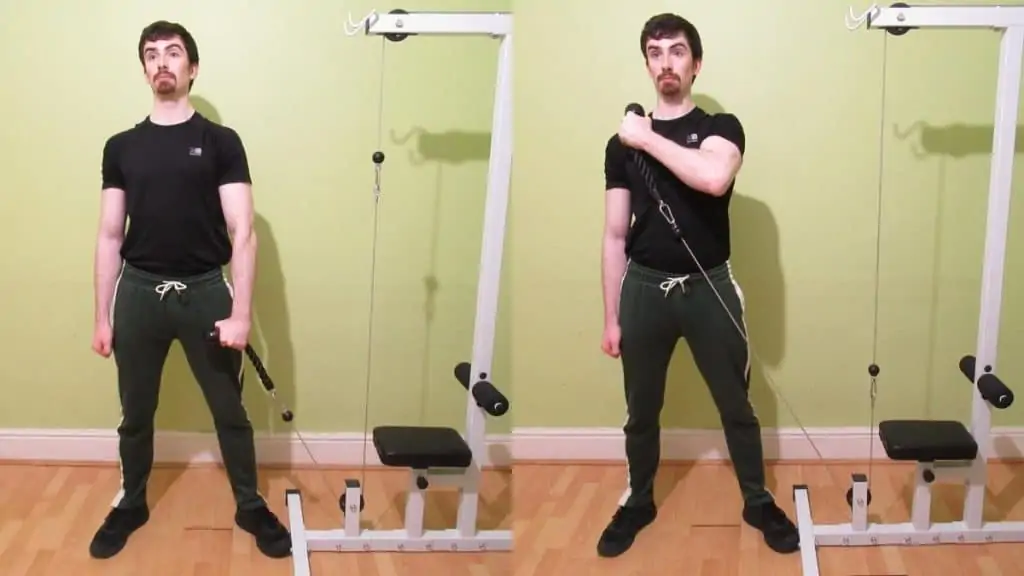
The cross-body rope cable curl works more of your biceps long head than the regular cable rope hammer curl. You’ll also generally be a bit stronger on this exercise because you’re using one arm at a time.
The only real downside is that your sets will take twice as long because you need to train each arm independently.
Slow negative rope hammer curls

Research shows that slowing down the eccentric portion of your reps during hammer curls increases the activation of your brachialis muscle. [3] This is important if you have lagging biceps because, as mentioned, the brachialis is one of the most neglected upper body muscles.
So consider lowering the rope over a 5-second period to increase the time under tension for the all-important brachialis if you want to develop that bicep peak.
Read more: Standing one arm cable curl │Leg and arm workouts
The verdict on rope hammer curls
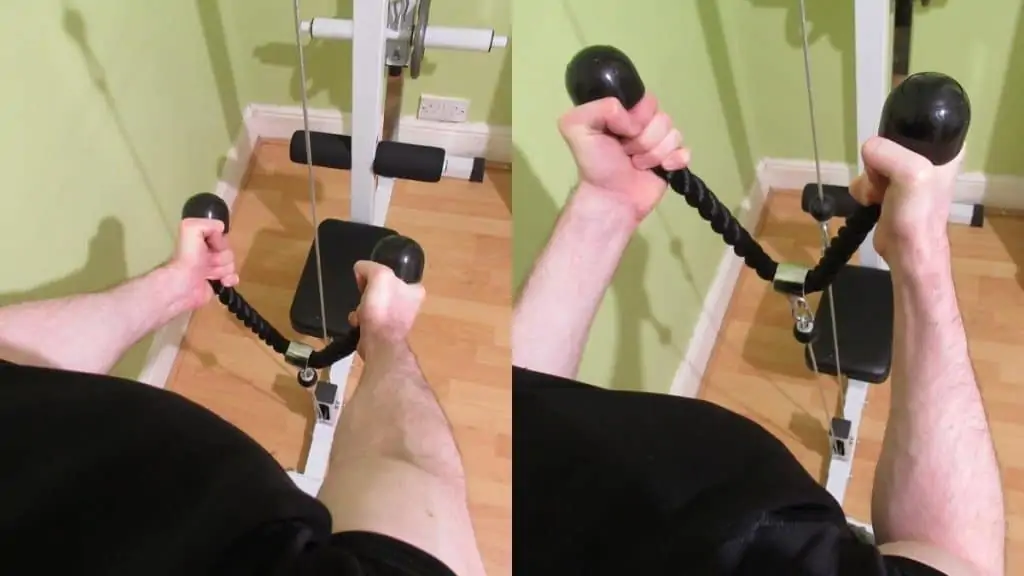
Cable hammer curls are easier to set up than the free-weight version. And because cable machines generally increase in more manageable increments than dumbbells, you’ll also get stronger in less time by using rope hammer curls as one of your primary arm exercises because you’ll be able to increase the resistance more frequently.
As always, make sure to lift with the proper form so that you can maximize muscle activation while avoiding injury.
References
- Henselmans, M. (2011, October 27). Muscle Specific Hypertrophy: Biceps, Back, and Lower Body. T-NATION. https://www.t-nation.com/training/muscle-specific-hypertrophy-biceps-back-and-lower-body
- Gorman, N. (2020, October 29). Brachialis muscle. Kenhub. https://www.kenhub.com/en/library/anatomy/brachialis-muscle
- Kulig, K., Powers, C. M., Shellock, F. G., & Terk, M. (2001). The effects of eccentric velocity on activation of elbow flexors: evaluation by magnetic resonance imaging. Medicine and Science in Sports and Exercise, 33(2), 196–200. https://doi.org/10.1097/00005768-200102000-00004

